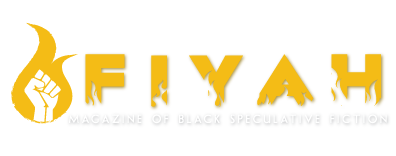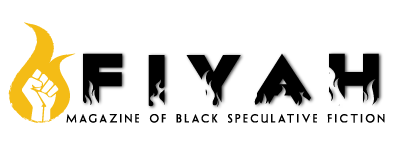The FIRE!! Then
 In 1926 Harlem a group of black intellectuals and artists met regularly at the home of the novelist, editor, and critic Wallace Thurman. A native of St. Louis, Thurman had arrived to join the flourishing Harlem Renaissance, and took up a job editing labor leader Asa Phillip Randolph’s newspaper The Messenger. But at night he pursed his art and caroused with other young writers, including the likes of Langston Hughes and Zora Neale Hurston. It was Hurston who dubbed their meeting place Niggerati Manor, and their salon the Niggerati—an irreverent dig at the larger, usually white dominated, world of the downtown literati.
In 1926 Harlem a group of black intellectuals and artists met regularly at the home of the novelist, editor, and critic Wallace Thurman. A native of St. Louis, Thurman had arrived to join the flourishing Harlem Renaissance, and took up a job editing labor leader Asa Phillip Randolph’s newspaper The Messenger. But at night he pursed his art and caroused with other young writers, including the likes of Langston Hughes and Zora Neale Hurston. It was Hurston who dubbed their meeting place Niggerati Manor, and their salon the Niggerati—an irreverent dig at the larger, usually white dominated, world of the downtown literati.
Niggerati Manor was also a challenge to the established black orthodoxy, which advocated art that promoted racial uplift in order to combat the rampant tide of anti-black racism and white supremacy. As one famous luminary of the day declared: “I stand in utter shamelessness and say that whatever art I have for writing has been used always for propaganda for gaining the right of black folk to love and enjoy. I do not care a damn for any art that is not used for propaganda.”
To combat both the marginalization of black writers in the mainstream literary world and the strictures placed on their art by promoters of racial uplift, Thurman began an experimental periodical in 1926 called FIRE!! The idea for a magazine was conceived one night at the apartment of painter Aaron Douglass. Its purpose was to allow black writers “to express ourselves freely and independently—without interference from old heads, white or Negro.” The first issue of FIRE!! included stories like Wallace’s Cordelia the Crude, about a teenage black girl who becomes a prostitute. Through the lens of a young aspiring artist, Richard Bruce Nugent’s Smoke, Lilies and Jade openly depicted black gay romance and sexual desire in 1920s Harlem. Zora Neale Hurston’s Color Struck used southern dialect and culture to explore sex across the color line and intraracial color consciousness.
These were taboo topics, outside the geographic and ideological boundaries set on black writers. Though Thurman would go on to publish his most well known work The Blacker the Berry in 1929, FIRE!! didn’t last beyond its first and only issue. Its legacy however was enduring, and summed up in a 1966 essay by Langston Hughes: “And we set out to publish Fire, a Negro quarterly of the arts to èpater le bourgeois, to burn up a lot of the old, dead conventional Negro-white ideas of the past … into a realization of the existence of the younger Negro writers and artists, and provide us with an outlet for publication not available in the limited pages of the small Negro magazines then existing.”
The FIYAH! This Time
FIYAH pulled on similar inspiration. In this modern version, the salon is a virtual space called the Niggerati Space Station, composed of a diverse group of Black writers and thinkers, both young and not so young. NSS was the creation of writer and author Troy L. Wiggins. Similar to Thurman’s 1920s apartment, its purpose is to allow Black SFF writers to share, discuss, vent, build, or what have you, on all things speculative fiction. It functions as an incubator of creativity, a safe space to dream our dreams of the Black beyond.
It was almost fateful that the idea for FIYAH eventually emerged from this heady mix. I pitched the idea for a Black SFF version of FIRE! almost a year ago, then having only the barest hints of what it might entail. Like Thurman I wanted it to be daring, unafraid and transcendent. But sparks need to be fed to catch or they sputter and die. And if left to my inattention that spark would surely have been snuffed out.
Then on July 26 2016 the magazine Fireside Fiction dropped #BlackSpecFic: A Fireside Fiction Company Special Report. The write-up put the dearth of Black authors in some of the more mainstream paying markets in stark numbers. Out of 2,039 stories published in 2015, only 38 were written by Black authors. More than half of all speculative fiction publications did not publish a single original story by a Black author over the span of the previous year. The report spurred debate, discussion and more than a few write-ups. On NSS, it also spurred action.
That day while discussing the report writer L. D. Lewis declared, “I feel the NSS FIRE! project is very necessary now.” A few other members of NSS echoed this call. That night author Justina Ireland returned to the issue, calling for an eventual “SFWA membership qualifying site” and providing the initial funding to start up the project. Over the next month, guided by Lewis, Ireland and Wiggins, other members of NSS brainstormed on how such a magazine would work. They gave it form and substance, turning an abandoned spark into something tangible and real. To them go the hard work and the dedication.
The outcome of this is FIYAH: A Magazine of Speculative Black Fiction. Like the original FIRE! it strives to build a vehicle that will once more èpater le bourgeois, burning up the old, the dead, and the conventional. It follows in the tradition of the known creators of the Black fantastic like Octavia Butler and less known pioneers like Pauline Hopkins. As its mission states, FIYAH: sets out “to spill tea and throw shade in the most delightful way.” It aims to be as intersectional as it is interdimensional. It seeks out Black excellence, among stories of Black space captains, Black wizards and Black gods. It asks us to ponder what does it mean to be Black and extraordinary in new, exciting and refreshing ways. And it arrives right on time. Because the future of genre is now.



FIYAH Literary Magazine: The Future Ain’t Going to Write Itself | Website dedicated to and from the perspective of Blerds (Black Nerds). We tackle all subjects for your nerd pedigree
[…] there’s this niche that needs filling but we’re happy to fill it. P. Djeli Clark had actually initiated the conversation about starting a Black spec fic magazine with our writing collective months ago. The Fireside […]
Loose-leaf Links #36 | Earl Grey Editing
[…] The 2016 Black SFF Writer Survey Report from FIYAH Magazine was released and is as discouraging as you’d imagine. […]